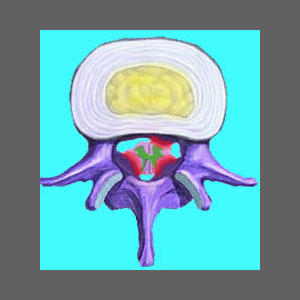
We thought it would be helpful to publish this fast and easy spinal stenosis FAQ page to provide some understandable answers to many of the most typical questions sent in by readers each and every week. Below are many queries and answers regarding the various types of spinal stenosis. If you have a basic question, the answer is probably right here. If not and you need a personalized response about a stenosis issue, or anything relating to back pain, you can always contact your physician.
We know that canal stenosis can be a confusing diagnosis which creates fear in many patients. We hope that this FAQ section helps to alleviate some of your worries and provides a better understanding of the fundamentals of the condition.
Diagnostic Spinal Stenosis FAQ
Q: What exactly is spinal stenosis anyway?
A: Stenosis anywhere in the body describes a condition of narrowing, like a blockage or decrease in space. In the case of spinal stenosis, this narrowing takes place in the central spinal canal, lateral recesses and/or foraminal spaces. More info can be found on our page titled: What is spinal stenosis?
Q: What is the difference between the central canal and a foraminal opening?
A: The central canal runs vertically through each vertebra of the spine and contains the spinal cord (cauda equina in the lower back) and various other tissues. The foraminal spaces are horizontal openings for the spinal nerve roots to exit the canal at each vertebral level. You can read more on our pages central spinal stenosis and neuroforaminal stenosis.
Q: Where does spinal stenosis come from?
A: The sources of stenosis are many and highly case specific. These include injury, degeneration and simple aging. Read about the causes of spinal stenosis for additional information.
Q: Why does spinal stenosis hurt?
A: This is a tough question, because not all stenosis is symptomatic. Mild to moderate cases usually are not painful at all or only enact minor aches and pains. Severe cases can become agonizing because they affect the way nerves function and can even make the spinal cord itself feel a literal pinch. Read more on our page titled: Spinal stenosis pain.
Treatment-Related Spinal Stenosis FAQ
Q: What is the best type of treatment for stenosis?
A: This is on a case by case basis. Many patients do not need any treatment, since their pain is unlikely to be sourced by the canal narrowing. Some patients may require conservative care, while others will benefit from surgical intervention. Read more information in the spinal stenosis treatment section.
Q: Will I need to have surgery for my stenosis?
A: You might. Some patients truly need an operation in order to prevent potentially dire health effects from befalling them. Many patients with stenosis do not require any treatment for mild forms or only conservative care for moderate to advanced forms. Read more about spinal stenosis surgery.
Q: Can chiropractic cure spinal stenosis? Feel free to substitute massage, physical therapy, reiki or virtually any other conservative care practice.
A: Not typically. Symptomatic care will not change the spinal anatomy, except in rare cases of stenosis caused exclusively by soft tissue pathologies. You may or may not enjoy relief, but the stenotic change will usually remain despite these types of care. Read more about nonsurgical care practices for spinal stenosis.
Spinal Stenosis FAQ Summary
We hope that this page helps you to better understand the basics of spinal stenosis. If not, at least, you will have a good idea where to look to learn more about your chosen topic.
If you are really looking for something specific and can not find it on your own, please use the site search function. This will allow you to look up any term on all The Cure Back Pain Network Sites. This is the best way to find anything and everything in the back and neck pain sector.
Spinal Stenosis > Spinal Stenosis Facts > Spinal Stenosis FAQ





